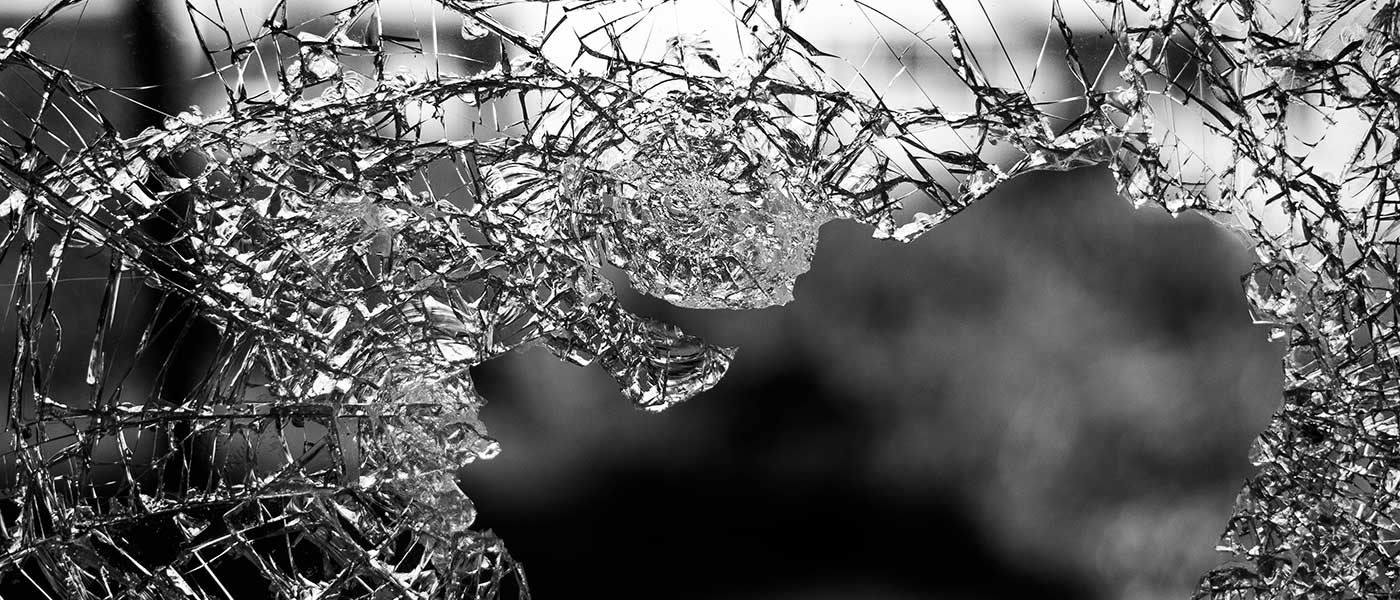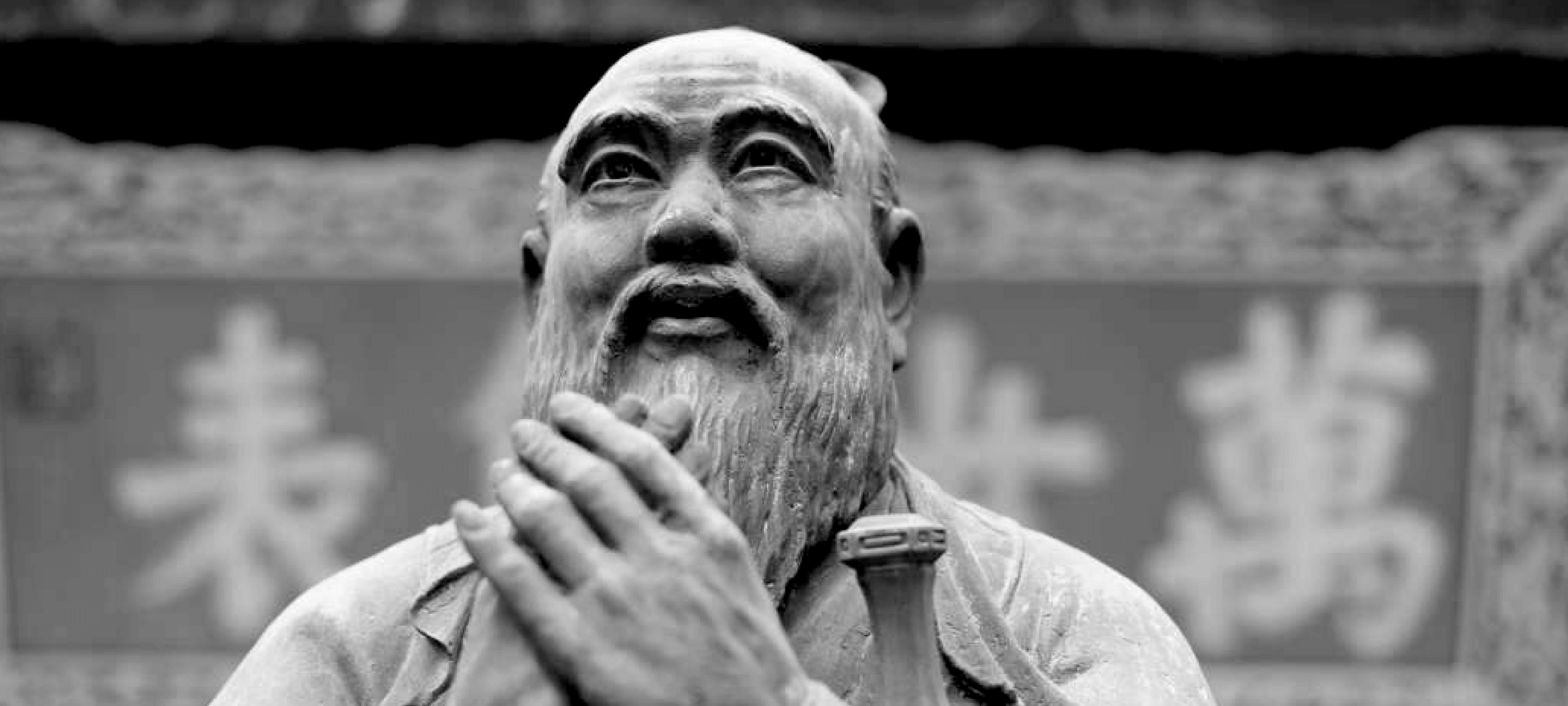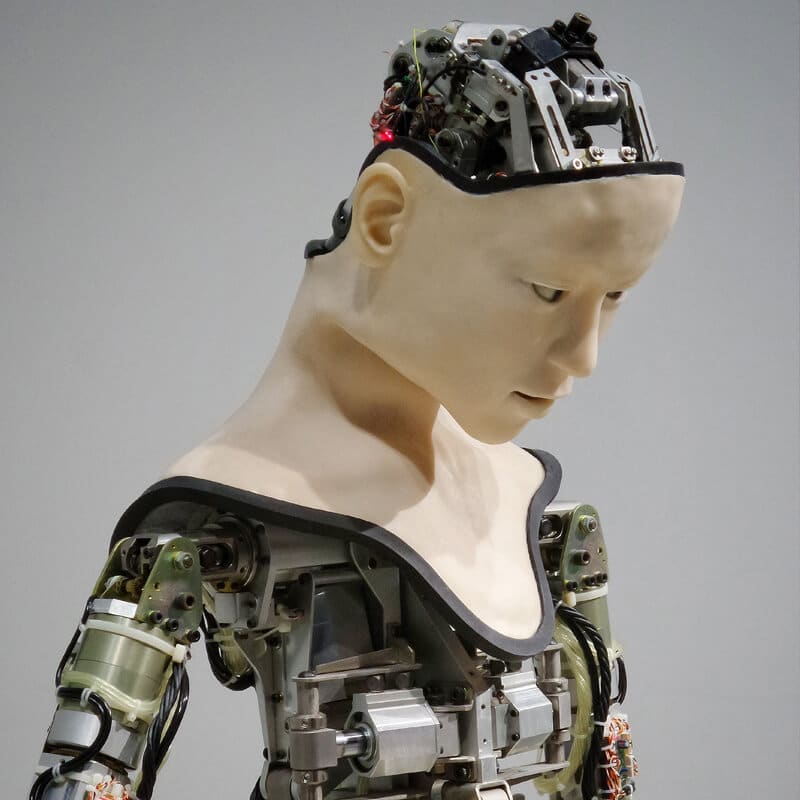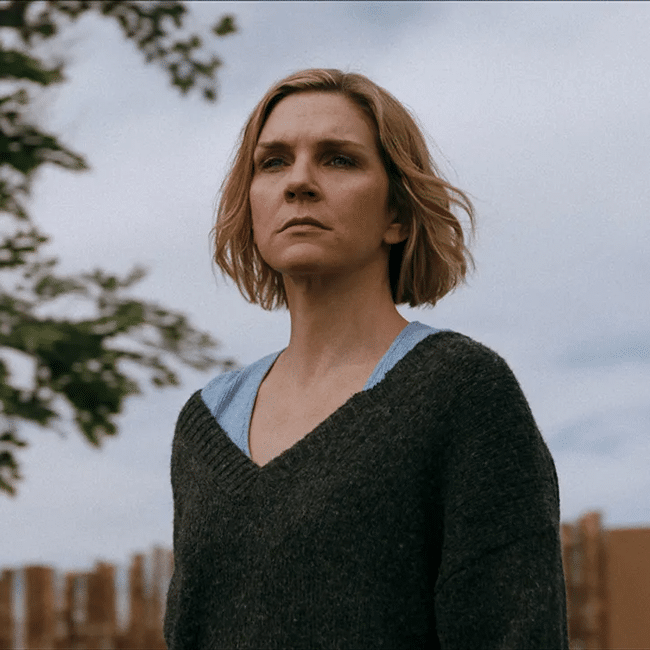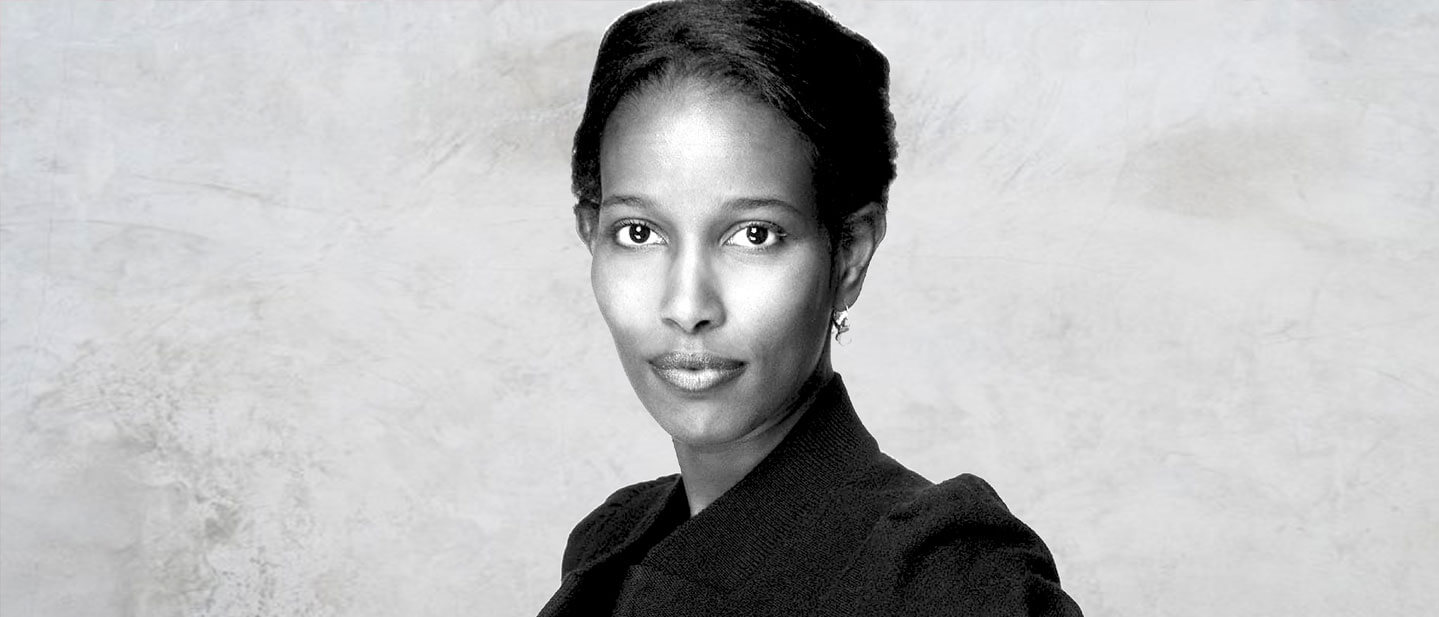David Lynch’s most surprising, important quality? His hope
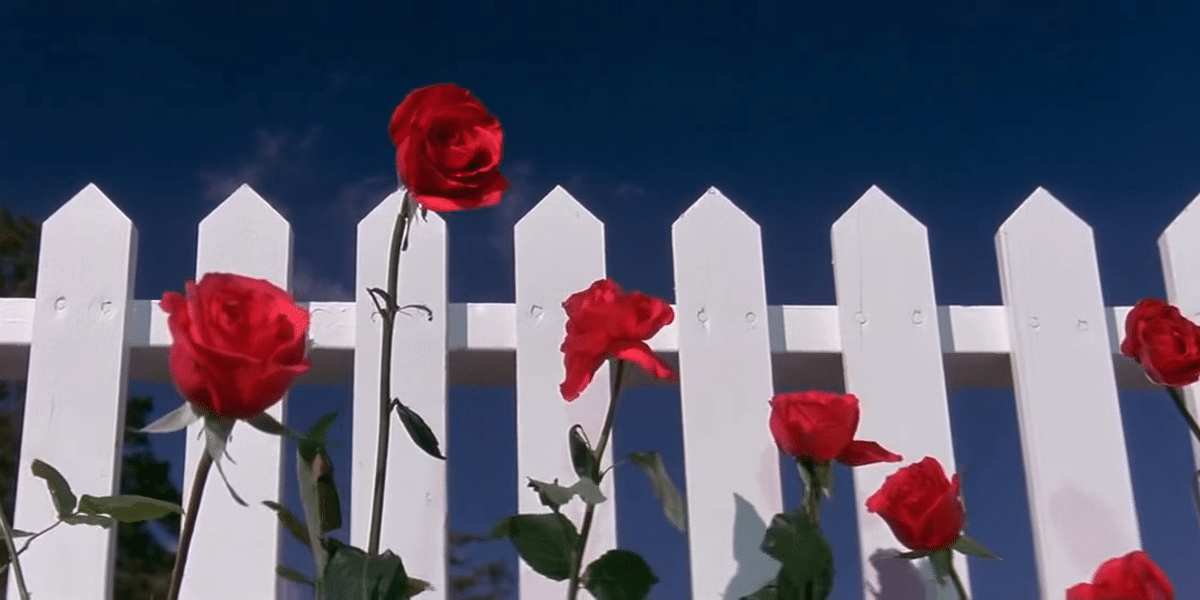
David Lynch’s most surprising, important quality? His hope
Opinion + AnalysisSociety + Culture
BY Joseph Earp 17 JAN 2025
David Lynch’s Blue Velvet – the film that turned an outsider auteur into something approaching a genuine cultural sensation – is, even after all these years, a hard watch.
The film sets up its thesis almost immediately. A montage of quaint images of small-town life, all blue skies and white picket fences, is disrupted by tragedy – the father of the film’s hero, Jeffrey Beaumont (Kyle MacLachlan) collapses in his yard, killed by a heart attack. The man’s dog laps at the hose clung in his dead, tight hands. And then Lynch’s camera, still exploring, does something both beautiful and terrible: it burrows under the soil, where a nightmarish cacophony of insects forage.
So there it is, Blue Velvet’s message – that beneath Americana, with its bright smiles and cups of coffee, lies horror. From that starting point, rape, torture and abuse abound, as Jeffrey’s voyeurism sends his path crashing into the orbit of Frank Booth (Dennis Hopper, in one of cinema’s most terrifying performances, all gritted teeth and mummy issues). We watch Dorothy Vallens (Isabella Rossellini) get tortured in various ways; we see Jeffrey beaten and humiliated. And perhaps most unsettlingly of all, we come to realise that the likes of Frank, a personification of pure evil, are more plentiful than we might ever want to believe. Even, if not especially, here, where the skies are blue.

The world is wild at heart and weird on top
Much has been made of this quality found in the films of Lynch, who died today after a battle with emphysema – the contrast between ethical virtue, and deep ethical horror. Throwing up these two disparate forces – good and evil – was the modus operandi of Lynch’s one-of-a-kind career.
Twin Peaks, his hit television show, unraveled the angelic exterior of murdered teenager Laura Palmer, and pit her against another of Lynch’s satanic figures, the supernatural drifter Bob. Wild at Heart, one of the more underrated films he ever made, plunged a loving young couple, Sailor and Lula, into an impossibly evil world. And The Elephant Man, a black-and-white muted howl of pain, saw a man with disabilities try to find hope amongst objectification and cruelty.

But what is not often discussed about Lynch is that he did find beauty, time and time again. Contrary to what some have written, Lynch’s veneer of smiles and blue skies wasn’t some ironic posturing, established merely to make the horror more horrifying. Other filmmakers have untangled the way that evil thrives in darkness, out of sight – that’s not what made Lynch special.
Lynch’s power – his genius, even – is that he believed fully in both of the forces that make the world what it is, the darkness and the light.
This is a rare sort of ethical dialectics: rare both in art, and in our personal lives. Believe too deeply in the evil of the world, and you will simply never get out of bed. Ignore that evil, and strive forward as though it isn’t there, and you will fall prey to an ignorance that will make you a poor ethical actor. The real trick in all things is to understand that truth, if we ever find it, exists in the middle of extremes.
Hence the model of the archetypal Lynch hero: Dale Cooper (MacLachlan, again), the handsome, profoundly odd detective hero of Twin Peaks. Dale has a goofy, almost unrepentant enthusiasm. He loves coffee; he loves pie; he loves the town of Twin Peaks. He’s all broad smiles, and dorky thumbs up, perpetually grinning to the small town residents that come to love him. But this optimism doesn’t exist in spite of the darkness of the world – it exists because of it.
That understanding is expressed through his deep affection for Laura Palmer, the dead young woman he never met. The more he learns about Laura, believed by the town to be the perfect all-American girl, the more he loves her, even as he comes to see the precise shape of her demons.
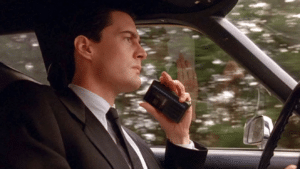
Lynch’s lesson is contained here. Cooper doesn’t choose to believe in the goodness of people at the expense of acknowledging their capacity for great harm. He understands that the world is built, in many ways, for cruelty to flourish; for abusers to thrive, for casual unkindness to go unremarked upon. And he also understands that, surprisingly, time and time again, human beings will decide to love each other.
The art life
This complicated optimism was also at the heart of Lynch’s deeply inspiring life outside of filmmaking. Like Cooper, Lynch was a famous lover of little treats, the kind of tiny slithers of goodness that aren’t just a distraction from the world – they are the world. There are countless memes of Lynch expounding the beauty of a good cup of coffee; enjoying two cookies and a Coke in the back seat of a car; and, perhaps most movingly of all, speaking lovingly of the importance of what he called “the art life.”
For Lynch, the art life was painting, thinking, and making things with your hands. “I had this idea that you drink coffee, you smoke cigarettes, and you paint, and that’s it”, Lynch said once, happily. There is horror in this world, but being an artist isn’t just an aesthetic choice – it’s an ethical one. Being an artist means being curious; looking; creating.
Rather than being swamped by the inexorable downward slide of humanity, the artistic life allows one to see the things that make us, at the end of the day, so blessed. So loved.

Blue Velvet contains that hope in its final scene. After taking a long drive through hell, the film wraps up not with an image of suffering or pain. Instead, one of its last shots is a robin sitting on a branch. A robin – that most ordinary of birds, so small as to be invisible, but a symbol, built up over the course of the film, representing love itself. “Maybe the robins are here,” Jeffrey says, cautiously. But, despite it all, they are.

Ethics in your inbox.
Get the latest inspiration, intelligence, events & more.
By signing up you agree to our privacy policy
You might be interested in…
Opinion + Analysis
Health + Wellbeing, Relationships, Society + Culture
Look at this: the power of women taking nude selfies
Opinion + Analysis
Business + Leadership, Politics + Human Rights, Society + Culture
Corruption, decency and probity advice
Explainer, READ
Society + Culture
Ethics Explainer: WEIRD ethics
Opinion + Analysis
Climate + Environment, Health + Wellbeing, Society + Culture
Melbourne Cup: The Ethical Form Guide
BY Joseph Earp
Joseph Earp is a poet, journalist and philosophy student. He is currently undertaking his PhD at the University of Sydney, studying the work of David Hume.
How to live a good life

What do you need to flourish in life? Philosophy and science suggest there are six key ingredients.
How do you decide where to live, what work to do, what kinds of relationships to cultivate and generally what kind of life to live? These are some of the most important questions we can ask, and the answers we arrive at can have profound impacts on whether we end up flourishing or miserable.
At the heart of these decisions is some implicit idea of what a good life looks like. But which picture should guide our actions? There is no shortage of voices selling us a range of visions of a good life, including our family, the media, pop culture, our workplace and, of course, advertising. We might hear that we should pursue wealth, status, success, comfort, happiness, etc., but philosophers and scientists have shown that these goals don’t necessarily lead to a better life.
So how should you guide the big decisions in your life? Here are six pillars that make up a good life.
Wisdom
Socrates famously said “the unexamined life is not worth living”. This relates to what we call wisdom. It’s a precondition that enables us to understand what a good life is, as well as gain knowledge about ourselves, what makes us tick and what causes our suffering.
Gaining wisdom is a life-long pursuit that requires a healthy dose of what we call ‘loving self-scepticism,’ because we are so good at fooling ourselves into taking the easy option rather than one that will be genuinely rewarding.
You can start cultivating wisdom by engaging in mindful behaviour, where you focus on being aware of your own internal state as well as what’s around you, rather than just running on auto-pilot all the time. You can deepen this by practicing meditation, but that’s not a requirement. Simply acknowledging what’s happening, and then taking time to reflect on it with a critical eye and an open mind can help you to better understand yourself and the world around you.
Purpose
Purpose means pursuing meaningful goals. Of course, many of the goals we pursue are imposed on us, whether that’s due to life’s necessities or because of our responsibilities. But we can also create goals for ourselves, and these often guide our big decisions, such as what career to pursue or whether to become a parent.
The key is pursuing meaningful goals that connect with our intrinsic aspirations rather than just pursuing things that seem important, like money or status, but that don’t actually help us flourish. An intrinsic aspiration is something that you find meaningful in its own right, and these are often activities that don’t just benefit ourselves, but have a positive impact on the world and other people. This could be through the work you do, helping other people in need or bettering your environment, or it could be through the time you spend caring for your family. There is abundant evidence that people who toil to help others report greater life satisfaction, even if they receive less money and status than if they did an easier job.
Agency
Agency is connected to the work we do in the world – your ability to have a sense of control in your life and to attain and practice mastery in what you do.
We probably all know that feeling when we’re deep in a task, using and stretching our abilities, we’re fully present in the moment and lose all sense of time. That’s called a ‘flow’ state, and it’s an indication that you’re exercising your agency. The task itself might even be unimportant: perhaps you’re creating art or music that no-one else will ever see or hear, but it’s in the making that you experience your agency. Some people can connect purpose and agency, and strive for mastery while doing meaningful work – but that’s not required for a good life.
Intimacy
Intimacy speaks to our fundamentally social nature. This means more than just having a lot of friends, in the real or online worlds. Casual friends are fine, but what is truly nourishing is having at least a few close friends, the kind of people around whom we can be our authentic selves, express vulnerability safely, and feel like we are seen and understood while reciprocating back. This could be your partner, but you can also have intimate friends. You don’t need many intimate relationships like this to flourish. Even a handful can give help you live a good life.
Of course, intimate friendships are not easy to cultivate, not least in the massively anonymous, technologically-mediated world many of us live in. One way to build meaningful friendships is to seek out people with similar values to you, whether that be through shared activities or just by keeping an eye out for people you admire and click with.
The trick is then to move from a superficial relationship into a closer one. While we often expect that we have to project our best, most confident and successful persona to the world, it’s actually when we lower the mask slightly, and reveal a bit of who’s underneath – including our uncertainties, anxieties and vulnerabilities – that we can build a deeper connection with someone, especially if they are willing to lower their mask in turn. We can do this by practicing what’s called escalating self-disclosure. This is about gradually lowering that mask and building trust and respect, which can then lead to a closer relationship.
Belonging
In addition to a few intimate friends, we also need to belong. This means that we feel like we’re a member of a social group that we care about, and that we’re seen, recognised and respected by other members of that group. This dimension of social life is often overlooked in modern society, which tends to promote atomic individualism, neglecting the importance of group identity.
We probably already belong to several different identity groups, whether that be connected to ethnicity, religion, local community or even our profession or a hobby. But cultivating a sense of belonging means more than just sharing some customs or activities, it means contributing something meaningful back to that community, and being proud of what your group represents – while also ensuring that belonging doesn’t slip into insularism or elitism.
Elevation
The final pillar of a good life is perhaps an odd one, but is no less important for many people. Elevation is captured in those experiences where we forget about ourselves, our problems, goals and anxieties for a moment, and we allow ourselves to sink into the background, focusing instead on the wonders of the world around us.
We can find elevation by spending time in nature or contemplating the vast stretches of space and time at an observatory or museum. We can find it by connecting with our ancestors by studying history or by walking through a cemetery. We find elevation by recognising the sacred is all around us, not just in religion, but in the rituals, objects and places that we hold dear. We can also experience elevation by acknowledging remarkable people around us, such as those who have performed great acts of kindness, compassion or self-sacrifice. Elevation reminds us that we are just a small part of a bigger system, and it helps us to escape our self-obsession and appreciate the world we live in.
Of course, there’s a lot more to each of these pillars, and different ones will resonate with different people based on your ability to choose how to live your life. But consider this guide to help you start the process of self-examination to discover what constitutes a good life for you.
Ethics Tune Up is an innovative and engaging masterclass series that will take your ethical skills to the next level. Our next series of workshops is running during May and June 2025. Book your tickets here.

Ethics in your inbox.
Get the latest inspiration, intelligence, events & more.
By signing up you agree to our privacy policy
You might be interested in…
Opinion + Analysis
Health + Wellbeing
Women’s pain in pregnancy and beyond is often minimised
Opinion + Analysis
Health + Wellbeing, Relationships
The etiquette of gift giving
Opinion + Analysis
Health + Wellbeing, Relationships
Send in the clowns: The ethics of comedy
Opinion + Analysis
Climate + Environment, Health + Wellbeing, Society + Culture
The five biggest myths of ethical fashion
BY Tim Dean
Dr Tim Dean is a public philosopher, speaker and writer. He is Philosopher in Residence and Manos Chair in Ethics at The Ethics Centre.
Discomfort isn’t dangerous, but avoiding it could be

Discomfort isn’t dangerous, but avoiding it could be
Opinion + AnalysisSociety + CultureRelationships
BY Emma Wilkins 7 JAN 2025
If I were a reviewer at a writers’ festival and I spotted an author whose work I’d praised – but also criticised – I’d be tempted to look the other way.
But, far from avoiding Christos Tsiolkas at last year’s Canberra Writers’ Festival, literary critic and Festival Artistic Director, Beejay Silcox chose to share the stage with him.
When asked if she felt uncomfortable, Silcox said that because she felt she’d done her job well – reflecting on the work, dealing with it on its own terms, choosing her words carefully – she didn’t. If she couldn’t be honest about “the loveliest man in Australian literature”, she didn’t deserve her job.
She did, however, describe that job as “inherently uncomfortable”. It’s the reason people often call her “brave”. But Silcox doesn’t share their view. “If what I do counts for bravery in our culture, we are f*cked,” she told the audience. “I know what bravery looks like; I’ve seen brave people. I’m just being honest.”
Point taken. There’s a difference between being honest and being brave. Honesty might require bravery, but the words aren’t interchangeable. If we use words like “bravery” too readily, we broaden its definition and reduce its potency.
It was the expanded application of certain words, that led psychology professor Nick Haslam to coin the term “concept creep”. More than a decade ago, he started noticing the widespread adoption of certain psychological terms in non-clinical settings was broadening people’s conceptions of harm. In a recent ABC interview, he said more expansive definitions of terms like “abuse” and “bullying” have had clear advantages, such as making it easier to call out bad behaviour. But mistakenly framing an unpleasant experience as “trauma”, or speaking as if ordinary worries constitute anxiety disorders, can make people feel, and become, more fragile.
This year, Australia introduced legislation that gives employers a positive duty to protect workers from psychosocial hazards and risks. It’s right to recognise that psychosocial harm can be as damaging as physical harm, but it’s important to understand what psychological safety isn’t. As Harvard business school professor Amy Edmondson stresses, it isn’t “feeling comfortable all the time”. It isn’t simply safety from discomfort, it’s safety to engage in conversations that might be uncomfortable. A manager should be able to gently raise an issue with an employee that might make them feel uncomfortable, without being accused of deliberately “violating” their safety – and vice versa. But I’ve heard managers, and educators, express concern that even well-intentioned, carefully delivered, feedback, could be perceived as an attack.
We can be uncomfortable and still be safe. If we lose this distinction, if managers in workplaces and teachers in schools, parents in the home and politicians in parliament, feel obliged to keep everyone comfortable all the time, we’ll end up in dangerous territory. We’ll be less able to express our views, and less able to hear each other out, less able to learn from each other.
Honest, measured, criticism plays an important role in society. We need to value it; even (perhaps especially) if it’s hard to hear. We also need to recognise that avoiding exposure to any and all discomfort will only heighten the sensation; and consider the merit, case by case, of facing it.
So, what might this look like?
C.S Lewis said that if you look for truth, “you may find comfort in the end”, but if you look for comfort, “you will not get either comfort or truth”. He wasn’t talking about performance reviews or reports or assignments, but the principle is still relevant.
If I seek the truth about my performance at work, I might find ways to improve it, gaining competence and confidence. A by-product will be a broader comfort zone. If I only want to hear praise, I can look for people who will only give it or find ways to only get it. I can avoid trying if I think I’ll fail, or I can start cheating to ensure success. In the short-term I might feel better, but over time, I’ll be progressively worse off.
We need more expansive conversations – more discomfort which, through exposure, will expand our comfort zones and increase our resilience. Silcox talks about how we need fewer “gatekeepers” – those who close doors and shut down important conversations – and more “locksmiths” – those who open them.
We can start by considering the way we speak, and think, and act. Are we using words that make others more cautious, risk averse, fearful, fragile, than they need to be? What about when talking to ourselves? Are we so focussed on staying safe from risk, that we forget about how many risks are safe to take? With this in mind, we can resolve to sit with discomfort, to recognise the doors that it can open, that comfort can’t. We can welcome feedback, even ask for it; embrace challenges, even set them for ourselves; replace complete avoidance, with strategic exposure. And if we’re in positions of authority, we can give those we oversee genuine permission to try and fail and try again.
It’s natural to avoid discomfort. But if we continually avoid what’s hard, it will feel harder still. If we want to talk about what matters and do it well; exercise moral courage; make a difference in the world – we’ll have to expand our comfort zones, not narrow them. We’ll have to take some risks. But do you know what else is risky? Sitting still.
Ethics in your inbox.
Get the latest inspiration, intelligence, events & more.
By signing up you agree to our privacy policy
You might be interested in…
Opinion + Analysis
Relationships
We shouldn’t assume bad intent from those we disagree with
Explainer
Relationships
Ethics Explainer: Agape
Opinion + Analysis
Society + Culture, Relationships
Where is the emotionally sensitive art for young men?
LISTEN
Society + Culture
Festival of Dangerous Ideas (FODI)
BY Emma Wilkins
Emma Wilkins is a journalist and freelance writer with a particular interest in exploring meaning and value through the lenses of literature and life. You can find her at: https://emmahwilkins.com/
Ask an ethicist: How do I get through Christmas without arguing with my family about politics?

Ask an ethicist: How do I get through Christmas without arguing with my family about politics?
Opinion + AnalysisRelationships
BY Tim Dean 19 DEC 2024
I love going home to see my family for Christmas. But over the past year I’ve noticed my uncle posting on Facebook about politics and conspiracy theories that are completely different to what I believe. I’m worried he might make an offensive quip about the news over dinner. How do I defend my point of view without it erupting into an argument?
Unlike most of the year, where we can comfortably reside within our own social bubbles, Christmas is when we’re thrust into the midst of that diverse range of personalities, generations and political persuasions that make up our extended family. This means we’re often faced with views we don’t normally encounter, and sometimes forced to defend our own views in the face of staunch opposition.
So, if you’re dreading the prospect of a stormy argument at the holiday dinner table, here are some tips for navigating the perilous territory of contentious topics and steering the conversation towards calmer waters.
Why conversations go bad
If humans were truth-seeking robots, then we’d welcome criticism of our views and thank others for showing that our beliefs are in error. But we’re not robots. We’re vulnerable social creatures, absorbing ideas and norms from our peers and those we admire, all while defending our identity and status from perceived attacks.
Compounding the complexity of how we form our beliefs and attitudes is that emotion often leads the way, with reason lagging behind, and we scramble to find arguments to support the way we feel. This means that many of the arguments we offer to support our views are actually not the cause of our belief, but the effect. They’re post-hoc rationalisations that we use to defend our underlying attitudes.
You can tell when someone is arguing using a post-hoc rationalisation, because if you surgically dismantle it, showing that it’s false, they still don’t change their mind. You might have knocked down one post-hoc rationalisation, but you haven’t challenged the actual reason they hold their attitude.
All this messy business of not being a robot means that disagreement about an issue where we hold strong feelings – and ethical questions are often the things we feel the most strongly about – can easily slip into conflict, where we rapidly find ourselves defending our turf and fighting back against threats to our identity and desperately trying to change the other person’s mind.
How to not spoil the dinner table conversation
The good news is that there are some techniques you can use to lower the temperature in contentious conversations, and possibly even walk away with a stronger relationship and some new perspectives to consider.
The first step is to stop trying to win! If you think about it, it’s strange that we even think that we can change someone’s mind in a single heated conversation. When was the last time such a conversation changed your mind? Instead, it takes a different kind of conversation – often multiple conversations – to encourage someone to adopt a different perspective, especially around topics where they already hold strong views.
So, when you hear someone state a view that you believe is wrong, try to resist doing the natural human thing of stating an opposite view. Doing so immediately locks the conversation in the Thunderdome, where two viewpoints enter, and only can survive. It’s even worse if the views battling it out are post-hoc rationalisations, because then you’re both just whiffing at ghosts.
Instead, pause. Take a deep breath. Then ask a question. And really listen to the answer. This does two important things. The first is that it actually gives you a fighting chance of understanding the detail of the other person’s view. We usually only get a chance to express a fragment of our full beliefs on a topic. And often others will fill in bit we leave unsaid with an uncharitable interpretation, sometimes even outright misrepresenting what we believe. Asking and listening allows them to fill in those gaps themselves.
The second thing that asking and listening does is arguably more important: it signals respect. Listening to someone is like giving them a gift (possibly an even more valuable one than they got out of the Secret Santa). It shows you actually care about what they think and that you want to know more. Sometimes, all people want is to get something off their chest, and giving them a chance to do so will cause them to temper their beliefs in the process, landing somewhere more reasonable.
The respect that listening generates becomes the bedrock of a good conversation about a contentious issue. It means they are more likely to want to listen to you in return, and it reduces the perception that their identity is under attack, so they might even be more willing to take your perspectives on board.
Story time
Once you’ve had a chance to listen to what they have to say (and hopefully had the chance to be listened to in return), then a next step can be to tell some stories that can shed light on your point of view.
You can talk about how you formed your belief, or share a perspective that you found surprising but persuasive. You can even invite them to share a story about how they came to their view, or ask if they know someone who has been affected by the issue you’re discussing. Techniques like this have been shown to humanise what can be otherwise abstract or dehumanised perspectives, grounding them in the real world and shifting the conversation away from stereotypes and glib generalisations.
If the conversation is getting heated at any point, there’s no shame in backing out or changing the subject. This is supposed to be a harmonious family gathering, after all. And relationships are fundamentally important to a good life, so it can sometimes be more important to preserve a relationship than it is to be right. Plus, reinforcing that relationship is precisely what is needed if you ever want to continue the conversation down the track and have them be receptive to your point of view.
Christmas dinner is not about changing minds. It’s about coming together as a family or a community to engage in ritual activities that are supposed to bring us together. At least, that’s the ideal. For many people, Christmas can be laced with tension, simmering resentments, power plays and drunken debates. While the techniques here won’t solve all those problems, they might help to lower the temperature, build some stronger relationships, and hopefully allow you to enjoy your post-meal nap in some peace.

Ethics in your inbox.
Get the latest inspiration, intelligence, events & more.
By signing up you agree to our privacy policy
You might be interested in…
Opinion + Analysis
Relationships
Courage isn’t about facing our fears, it’s about facing ourselves
Explainer
Relationships
Ethics Explainer: Agape
Big thinker
Politics + Human Rights, Relationships
Big Thinker: Confucius
Explainer
Relationships, Science + Technology
Ethics Explainer: Post-Humanism
BY Tim Dean
Dr Tim Dean is a public philosopher, speaker and writer. He is Philosopher in Residence and Manos Chair in Ethics at The Ethics Centre.
The ethics of pets: Ownership, abolitionism and the free-roaming model

The ethics of pets: Ownership, abolitionism and the free-roaming model
Opinion + AnalysisSociety + Culture
BY William Salkeld 16 DEC 2024
“If there are no dogs in heaven, I want to go where they go”, said the American performer, Will Rogers.
It is no secret that we are deeply connected to the animals we keep as pets. In Australia, most pet owners would like to think they treat their animals well. 52% of Australians consider their pets to be family members, and in 2021 Australians spent $30.7 billion on food, healthcare, and enrichment for their cats and dogs.
Studying animal ethics, I used to believe that pet ownership was a good thing. Following the arguments of moral philosopher Christine Korsgaard and many others, I saw it as a mutually beneficial situation. We provide our animals with the necessary conditions for a good life, such as food, shelter, healthcare, love and attention. In return, they provide us with companionship and countless other life-affirming benefits.
As long as we can provide our pets with the kind of life that is good for them, then having pets is a good thing, I reasoned. After all, how could I deny that my family’s Golden Retriever, Ruby, lived a charmed life full of play, food, and affection? As I would soon find out, the ethics of pet-keeping is far more complicated than ensuring our furry friends are ‘well taken care of’.
My view about pets was turned upside down after listening to a podcast with legal scholar and animal ethicist Gary Francione. Francione is an abolitionist, meaning that he believes that we should abolish all use and ownership of nonhuman animals, including pets. To understand this view, it is first important to understand the history of domesticated animals and pets.
Domesticated animals are those animals like dogs, cats, or sheep who have adapted or ‘tamed’ because of or by humans. While the jury is still out on how wolves initially interacted with humans to become dogs, humans have subsequently spent millennia forcibly breeding dogs to make them less aggressive, ‘cuter’, or specialised in some activity like cattle herding. Or, in the case of my family’s Golden Retriever, Ruby, it seems she has been bred to chew up sofas and love carrots (don’t ask).
As Francione puts it, we have domesticated dogs and cats into a state of perpetual childhood where they are dependent on us for basic care. Yet, unlike children, cats and dogs don’t grow up and become independent; they remain in a state of dependency for their entire lives.
The animals we keep as pets are a subset of domesticated animals. The concept of pet ownership in Western countries is surprisingly recent, beginning in the Victorian era. Our entitlement to owning pets has not existed throughout history, meaning we should be critical of current ethical attitudes towards pets.
For abolitionists like Francione, the problem of pet ownership is twofold. One, the state of dependency is problematic because we have bred animals to become dependent on us. Imagine if someone raised their child to be completely dependent on them and to never reach true adulthood; we would likely call it emotional abuse. Yet in the case of pets, it is considered ‘proper training’.
Second is the problem of ownership and possession. Animals (including pets) are treated as property in the law. It’s even in the name: ‘pet ownership’. Most of us know that animals are sentient, and perhaps even that they are individuals with rights. However, if this was truly the case, then it would be nonsensical that an animal could be ‘owned’ as property in the same way it is morally outrageous for a human to be owned.
For these two reasons, abolitionists like Francione think that if we could wave a magic wand, we should remove all domesticated animals like cats and dogs who depend on us from existence. While we should adopt and care for the current animals that are already alive, we should also aim to abolish the institution of owning pets.
The abolitionist position is confronting and uncomfortable. I love my dog Ruby, and I was initially defensive against Francione’s argument. Has my family really been doing something wrong by pouring hours of our lives and thousands of our (my parents’) dollars into caring for a dog who we treat as a member of a family? Even if we have not personally been doing anything wrong, the world without cats and dogs that Francione envisages seems like a slightly less happy world.
I was struggling with this dilemma when my partner and I met a cat at a guesthouse in Malaysia’s Cameron Highlands, curled up in a box in the corner of the reception. When we asked the guesthouse owners what his name was, they said that he didn’t have a name yet because he only arrived three weeks earlier.
He, the cat, had picked them. In return for his company, the guesthouse owners gave him as much kibble as he would like and took him to the vet. On the same trip, I also learned that in Türkiye, many people have a ‘tab’ at the vet they use for vagabond cats who choose to live with them. This framework of domesticated animals without ‘owners’ is what I call the ‘free roaming’ model, an idea tentatively welcomed by animal studies scholar Claudia Hirtenfelder that, as Eva Meijer argues, acknowledges the agency of nonhuman animals.
Perhaps a more familiar example of a free-roaming animal is the life of the eponymous dog from the beloved Australian film, Red Dog. In the film, Red Dog is no one’s pet. Rather, he is cared for by the employees of a mine in Western Australia’s Pilbara and eventually decides to live with an American man named John Grant. Red Dog has agency, and [spoiler alert] uses that agency to travel across Australia in search of John after his premature death.
The key difference between free-roaming domesticated animals and pets is that these animals are not owned. Yes, many free-roaming cats and dogs may still depend on some human care, but they have a choice in how and from whom they receive that care.
The free-roaming model is not perfect, however. According to the Humane Society, 25% of outdoor (commonly referred to as ‘feral’) kittens do not survive past 6 months. This is not the case for kittens bred in captivity. And while some cats are lucky, like the one we met in Malaysia, many endure lives of illness and famine. And, as Korsgaard points out, domesticated cats are a predatorial threat to native wildlife, which is why, for example, they are not allowed outside without a leash in the Australian Capital Territory.
For the free-roaming model of animal companionship to work, we would have to make our urban spaces more hospitable to other animals. There would have to be a significant attitude shift in our tolerance of animals in public spaces where we usually don’t see them.
Until that day, perhaps the best thing we can do is adopt pets from shelters like the RSPCA, rather than breeders who perpetuate the institution of animal dependency and pet ownership. However, the free-roaming model gives hope for a post-pet world. As Korsgaard puts it:
“There is something about the naked, unfiltered joy that animals take in little things—a food treat, an uninhibited romp, a patch of sunlight, a belly rub from a friendly human—that reawakens our sense of the all-important thing that we share with them: the sheer joy and terror of conscious existence.”
This article won the 2024 Young Writers’ Competition 18-29 category.
Ethics in your inbox.
Get the latest inspiration, intelligence, events & more.
By signing up you agree to our privacy policy
You might be interested in…
Opinion + Analysis
Business + Leadership, Society + Culture
The Ethics Institute: Helping Australia realise its full potential
Opinion + Analysis
Society + Culture
Ask an ethicist: Am I falling behind in life “milestones”?
Opinion + Analysis
Society + Culture
Should we be afraid of consensus? Pluribus and the horrors of mainstream happiness
Opinion + Analysis
Business + Leadership, Society + Culture
A new guide for SME’s to connect with purpose
BY William Salkeld
William Salkeld is a PhD candidate with the school of Politics and International Relations at the Australian National University, researching interspecies democratic theory. He is interested in animal and environmental ethics, political philosophy, animal minds and cognition, and moral philosophy.
Rethinking the way we give

Whether it’s helping out a neighbour in need, assisting a stranger living rough on the streets or being asked at the checkout to donate $2 to charity, we are all, at some point, involved in the action of giving.
The giving of service. The giving of time. The giving of money. We often find ourselves giving from a place of good intention, but not fully understanding the consequences of our actions.
Away from home, when travelling in a developing country, it’s especially difficult to ignore the begging children on the streets, families living in overcrowded homes and poverty, the absence of healthcare and the poor state of schools.
In 2006, Australian philanthropist Tara Winkler witnessed the distressing realities of children living in poverty whilst visiting a Cambodian orphanage. She was so moved that she returned a year later with money she had fundraised, ready to work hard to improve the children’s quality of life. During her time as a volunteer, she discovered that the orphanage’s director was abusive and misappropriating donations, an occurrence not unheard of in the industry. Winkler also learnt that most ‘orphans’ still had their families but were living in these institutions to escape the poverty cycle.
Attempting to save these children, Winkler established her own orphanage in 2007, only to realise it was further fueling Cambodia’s widespread misuse and exploitation of orphanages, causing harm to children and separating families. She has since developed the Cambodia Children’s Trust, an organisation that aims to address root causes of poverty and family unit breakdown through social work and locally based initiatives involving education and healthcare, providing sustainable and positive futures for at-risk communities.
By spotlighting this story, I am not aiming to discourage the act of giving but rather to motivate individuals to have a more considered approach on how we give and to whom. As highlighted in philosopher Peter Singer’s book, The Life You Can Save, ‘perhaps those who do not research think that it will be too difficult to find out what charities offer better value, so they may as well give to whatever charity last caught their eye’. This is reflected in Australia’s Giving Report from 2019, when it was recorded that 41% of Australians would donate more money in the next 12 months if they better understood where their money would be spent, whilst 23% hoped for more transparency about the cause and its regulations.
So, how can we shift these figures and guide people toward more impactful giving choices?
Let’s take a look at UNICEF. According to their Donate Where Need is Greatest appeal, of each dollar donated, 80 cents is specifically directed towards helping vulnerable children, 14 cents to essential fundraising costs and six cents to administration.
Given these figures alone, it’s difficult to assess the lasting impression of this particular campaign, so we have to look further. We discover their main goal is to break the vicious cycle of poverty by providing small initiatives that will have beneficial, long-term effects. A donation of 84 dollars equates to 84,000L of clean drinking water made accessible to some of the most at-risk children and their communities around the world. This small change results in the difference between a safe and healthy child to one who might face life-threatening illnesses through contaminated water supplies. At this point, we can gauge that donations will be properly utilised by this cause and will be incredibly significant to the lives of these children, stressing the importance of who we give to rather than a quantitative measure.
However, it’s a big ask for everyday people, simply trying to do their part, to pause and assess how their time and money could best be spent. Sometimes, it is just simpler and seems just as effective to donate to any charity that loosely relates to an ethical issue that matters most to us. To make better decisions when it comes to giving, online organisations such as The Life You Can Save and GiveWell can help evaluate and recommend high-impact, cost-effective and evidence-based charities, proving that everyone has the potential to make a meaningful impact.
By taking a few extra measures to reflect and consider where and how we direct our intentions, we can make more ethical choices that result in sustainable outcomes and give to others in a way that transforms their lives for the better.
This article won the 2024 Young Writers’ Competition Under 18s category.
Ethics in your inbox.
Get the latest inspiration, intelligence, events & more.
By signing up you agree to our privacy policy
You might be interested in…
Opinion + Analysis
Relationships, Society + Culture
How can you love someone you don’t know? ‘Swarm’ and the price of obsession
Opinion + Analysis
Relationships, Society + Culture
Meet David Blunt, our new Fellow exploring the role ethics can play in politics
Opinion + Analysis
Business + Leadership, Society + Culture
A win for The Ethics Centre
Opinion + Analysis
Business + Leadership, Society + Culture
Four causes of ethical failure, and how to correct them
BY Serei Bayley
Serei is a 15-year-old high school student currently attending Redlands. Interested in commerce and history subjects, she has aspirations to study law or business at a university overseas. She loves travelling and spending summer days at the beach. Earlier in 2024, Serei visited Cambodia, where she was inspired by her interactions with various NGOs, which motivated her to write this piece.
Ethics Explainer: Just Punishment

Ethics Explainer: Just Punishment
ExplainerSociety + CulturePolitics + Human Rights
BY The Ethics Centre 6 DEC 2024
In 2001, Marcellus Williams was convicted of killing Felicia Gayle, found stabbed to death in her home in 1998.
Over two decades later, he was given the death penalty, directly against the wishes of the prosecutor, the jury and, notably, Gayle’s family.
Cases like this draw our attention to the nature of punishment and its role in delivering justice. We can think about justice, and hence what is just punishment, as a question about what we deserve. But who decides what we deserve, and on what basis?
There are many ways that people think about punishment, but generally it’s justified in some variation of the following: retribution, deterrence, rehabilitation, and/or restoration. These are not all mutually exclusive ideas either, but rather different arguments about what should be the primary purpose and mode of punishment
Purposeful Punishment
Punishment is often viewed through the lens of retribution, where wrongdoers are punished in proportion to their offenses. The concept of retributive justice is grounded in the idea that punishment restores balance in society by making offenders ‘pay’ in various ways, like prison time or fines, for their transgressions.
This perspective is somewhat intuitive for most people, as it’s reflected in our moral psychology. When we feel wronged, we often become outraged. Outrage is a moral emotion that often inspires thoughts of harming the wrongdoer, so retributive punishment can feel intuitively justified for many. And while it has roots in our evolutionary psychology, it can also be a harmful disposition to have in a modern context.
The 18th-century philosopher Immanuel Kant strongly defended retributive justice as a matter of principle, much like his general deontological moral convictions. Kant believed that people who commit crimes deserve to be punished simply because they have done wrong, irrespective of whether it leads to positive social outcomes. In his view, punishment must fit the crime, upholding the dignity of the law and ensuring that justice is served.
However, there are many modern critics of retributivism. Some argue that focusing solely on punishment in a retributive way overlooks the possibility of rehabilitation and societal reintegration. These criticisms often come from a consequentialist approach, focusing on how to create positive outcomes.
One of these is an ongoing ethical debate about the role of punishment as a deterrent. This is a consequentialist perspective that suggests punishment should aim to maximise social benefits by deterring future crimes. This view is often criticised because of its implications on proportionality. If punishment is used primarily as a deterrent, there is a high risk that people will be punished more harshly than their crimes warrant, merely to serve as an example. This approach can conflict with principles of fairness and proportionality that are central to most conceptions of justice. Some also consider it to be a view that misunderstands the motives and conditions that surround and cause common crime.
Other, more contemporary, consequentialist views on punishment focus on rehabilitation and restoration. Feminist philosophers, such as Martha Nussbaum, have proposed a broader, more compassionate view of justice that emphasises human dignity. Nussbaum suggests that a purely punitive system dehumanises offenders, treating them merely as vessels for punishment rather than as individuals with the capacity for moral growth and change.
They argue that this dehumanisation is a primary factor in high rates of recidivism, as it perpetuates the cycle of disadvantage that often underpins crime. Hence, an ability for change and reintegration is seen by some as crucial to developing pro-social methods of justice that decrease recidivism.
Importantly, these views are not inherently at odds with traditional punishment, like prison. However, they are critical of the way that punishment is enacted. To be in line with rehabilitative methods, prisons in most countries worldwide would need to see a significant shift towards models that respect the dignity of prisoners through higher quality amenities, vocations, education, exercise and social opportunities.
One unintuitive and hence potentially difficult aspect of these consequentialist perspectives is that in some cases punishment will be deemed altogether unnecessary. For example, if a wrongdoer is found to be impaired significantly by mental illness (e.g. dementia) to the extent that they have no memory or awareness of their wrongdoing, some would claim that any type of retributive punishment is wrong, as it serves no purpose aside from satisfying outrage. This can be a difficult outcome to accept for those who see punishment as needing to “even the scales”.
Justice and Punishment
The ethical implications of punishment become even more complex when considering factors like bias and the reality of disproportionate sentencing. For example, marginalised groups face more scrutiny and harsher sentences for similar crimes, both in Australia and globally. This disparity is often unconscious, resulting in a denial of responsibility at many steps in the system and a resistance to progress.
If punishment is disproportionately applied to disadvantaged groups, then it is not just. The ethical demand of justice is for equal treatment, where punishment reflects the crime, not the social status or identity of the offender.
Whether our idea of punishment involves revenge or benevolence, it’s important to understand the motivations behind our convictions. All the sides of the punishment spectrum speak to different intuitions we hold, but whether we are steadfast in our right to get even, or we believe an eye for an eye leaves the whole world blind, we must be prepared to find the nuance for the betterment of us all.

Ethics in your inbox.
Get the latest inspiration, intelligence, events & more.
By signing up you agree to our privacy policy
You might be interested in…
Big thinker
Politics + Human Rights
Big Thinker: Ayaan Hirsi Ali
Opinion + Analysis
Politics + Human Rights
Is every billionaire a policy failure?
Opinion + Analysis
Relationships, Society + Culture
The #MeToo debate – recommended reads
Opinion + Analysis
Health + Wellbeing, Society + Culture
The right to connect
BY The Ethics Centre
The Ethics Centre is a not-for-profit organisation developing innovative programs, services and experiences, designed to bring ethics to the centre of professional and personal life.
Hey liberals, do you like this hegemony of ours? Then you’d better damn well act like it

Hey liberals, do you like this hegemony of ours? Then you’d better damn well act like it
Opinion + AnalysisPolitics + Human Rights
BY Alexandre Lefebvre 6 DEC 2024
In September 2016, just before that year’s United States presidential election, The Claremont Review of Books published an essay that became an instant classic. It was titled “The Flight 93 Election”, and its message was stark. If voters didn’t rush the cockpit and come out for Donald Trump in numbers, then traditional values and American interests would be flown into the ground. “If you don’t try, death is certain”, was its rallying cry.
Why were conservatives so scared? Their panic reflected a real insight: for decades, liberalism — its moral values and sensibilities — had been gaining traction in American (and, more broadly, Western) culture. The worry wasn’t so much about liberalism taking over politics. On paper, at least, and despite gross and systemic failures, the United States has always been a constitutional liberal democracy. The problem was the slow and steady creep of liberal values into areas of life completely remote from politics. As a prominent conservative scholar put it:
“Liberalism is thus not merely, as is often portrayed, a narrowly political project of constitutional government and juridical defence of rights. Rather, it seeks to transform all of human life and the world.”
I’m a liberal and I believe conservatives are absolutely right on this point. Liberalism is hegemonic and liberals are the hegemons of the Western world. But that hegemony won’t last if we keep carrying on as we are.
If I had to sum up the 2024 election in a headline, it would be: “This Just In: Actually Existing Liberalism Sucks”. Liberalism is an ideology rooted in a core moral concept — fairness. It’s easy to lose sight of how extraordinary liberalism is. It teaches every single one of its members that they matter, and that every citizen, you and me included, has a legitimate expectation to be treated reasonably and fairly by the basic institutions of society. Fairness and reciprocity for all are the radical moral adventure of liberalism, and I believe it is a beautiful ideal capable of inspiring the enduring support of large majorities.
The trouble is that liberals in most liberal democracies — maybe even especially in the United States — do two things that almost seem designed to inspire resentment: they fail to take inequality seriously, and they moralise.
Consider how many times we heard the term “vibecession” in the run-up to the election. It played nonstop in The New York Times, essentially gaslighting the American public into believing that the cost of living was in their heads or, at worst, a thing of the past. But as Bernie Sanders posted on X, and reiterated in a justifiably prickly post-election podcast with the Times, “It should come as no great surprise that a Democratic Party which has abandoned working-class people would find that the working class has abandoned them.”
History has much to teach us on this point. Late in life, Alexis de Tocqueville — the greatest booster of American democracy — wrote an extraordinary post-mortem on the collapse of a social and political order called The Ancien Régime and the Revolution (1856). His key insight is especially relevant today: a regime is doomed the moment it begins to be hated on a micro-level, when grievances become embedded in the interactions and practices of everyday life. “F**k you”, the average person might think when eggs cost twice as much, or “Jesus Christ!” when the inspection line for a sub-par two-bedroom apartment stretches around the block.
The United States is not unique in this respect. In fact, every single government in the Western democratic world that has faced an election recently has been replaced — whether they’ve switched from liberal to conservative or conservative to liberal. But liberalism, which prides itself on fairness and equal opportunity, is especially vulnerable to this kind of resentment when it falls short of its promises.
Which brings me to the second point of liberal folly: we moralise. Once again, let me pick on the standard bearer of correct liberal opinion, The New York Times. In the two weeks following the election — though, honestly, I could have picked any week within the past ten years — it ran two opinion pieces, one from the right and one from the left wings of its liberal factions, that exemplify the problem rather than the solution. From the right, David French argues that Trump’s 2025 administration is already poised to implode under the weight of its own incompetence and corruption. From the left, Roxane Gay declares a moral imperative to reject the Republican worldview entirely, writing, “We must refuse to participate in a mass delusion”.
Come on. Liberals just got their asses handed to them two weeks ago. Our first impulse cannot be to scold and denounce — that’s exactly why liberals are hated. We can be snobs, and snobbery is one of the worst traits imaginable. It’s a particular kind of pleasure rooted in making inequality felt and hurt. If that’s the only solace liberals can offer themselves right now, we’re in serious trouble. The cockpit liberals need to rush isn’t the wider electorate but an elite orthodoxy that insists it has all the practical and moral answers.
What should liberals do? First, we need to chill. Liberalism remains culturally and politically hegemonic in the West, and Rome wasn’t destroyed in a day. Second, we need to pivot. People will, of course, have different opinions about the way forward. But if I could issue a categorical imperative for liberals, it would be this: keep striving for a country built for everyone, and don’t talk down to those who think differently. Third, we need to listen. To tip my own hand, the best proposal I’ve heard for how liberals should regroup comes from Sohrab Ahmari — himself no friend of liberalism — in a post on X. Here it is in full:
“Imagine a left without the freaky pronoun brigade; that’s reasonably restrictionist on the border (where most voters are); that backs policing and caters to sociality instead of the antisocial; but at the same time is populist on the economy. That’s … pretty attractive.”
That sounds like Trumpism, some would say. I think not, but this isn’t the place to make my case.
The point is that liberals must stop retreating into smugness and start confronting the realities that have alienated so many. Liberalism’s promise of fairness is worth fighting for, but only if we’re willing to embody it, not just preach it.
If we want to hold onto this hegemony of ours, we need to act like it’s worth saving. And that means changing — fast.
This article was originally published by ABC Religion and Ethics.
Image by Andreas Praefcke.
Ethics in your inbox.
Get the latest inspiration, intelligence, events & more.
By signing up you agree to our privacy policy
You might be interested in…
Big thinker
Politics + Human Rights, Science + Technology
Big Thinker: Francesca Minerva
Opinion + Analysis
Politics + Human Rights
We are witnessing just how fragile liberal democracy is – it’s up to us to strengthen its foundations
Opinion + Analysis
Climate + Environment, Politics + Human Rights
Increase or reduce immigration? Recommended reads
Opinion + Analysis
Politics + Human Rights
Is the right to die about rights or consequences?
BY Alexandre Lefebvre
Alexandre Lefebvre is Professor of Politics and Philosophy at The University of Sydney. His most recent book is Liberalism as a Way of Life.
Community is hard, isolation is harder

Community is hard, isolation is harder
Opinion + AnalysisRelationshipsSociety + Culture
BY Daniel Finlay 28 NOV 2024
Yesterday I crossed the street to avoid talking to an acquaintance.
Not because I don’t like them. Not because I was in a rush. But because I often feel a deep aversion to participating in small pleasantries or having to socialise when I’m mentally unprepared.
This is only one in a list of anti-social tendencies I’ve noticed myself developing during my adult life.
A lot of them seem more mundane than crossing the street, too. When’s the last time you took off your headphones and casually spoke to a stranger on the train or at the shops? Have you gotten to you know your neighbours or your barista? If a small accident happens in public, do you shy away or pretend you didn’t notice?
Community and Individualism
Recently on TikTok, something that’s caught my attention is a renewed focus on the benefits of and desire for community and how that conflicts with our increasingly individualistic mindsets.
Friction between these two ideas seems unavoidable: community involves a focus on the people around you, and individualism involves a focus on yourself. Go too far in either direction and you’ll inevitably begin to neglect the other.
In his video “This is one of my hills”, creator NotWildlin responds to the view held by some that we don’t owe strangers pleasantries. His gripe isn’t necessarily that we do owe strangers anything, but rather that this attitude appeared to be coming from people who were simultaneously frustrated with the lack of opportunity for community around them. Specifically, they had been advocating for more third places.
Coined by the sociologist Ray Oldenburg in his book The Great Good Place, third places are communal public spaces where casual conversation is the primary (but not necessarily only) activity, and the space is neutral, welcoming, cozy, accessible, playful and homely. Importantly, these spaces are separate from the home, our first place, and from work or study, our second place.
These are places where it’s encouraged to interact with strangers, with a sense of openness for conversation and general interaction with local community.
So, NotWildlin’s argument is this:
If you are the kind of person who laments a decline of local community, who wants to build social capital through things like third places, then how can you also justify being habitually anti-social?
Instead of thinking about pro-social habits as something we owe, we should think about them as something we want to develop in the name of community.
This argument honestly rocked me a little, as someone who is becoming increasingly community-minded, while also holding desperately onto my inalienable right to be left alone.
However, it does seem to me, as an extension of NotWildlin’s point, that a focus on third places is a misprioritisation. On a systemic level, yes, there could be more local government support in creating welcoming public spaces to encourage community. On the other hand, many areas in populous Australian cities do have third places that go underutilised. How many younger people do you know that use libraries, public gardens or other community centres? The deeper problem in my estimation is social and cultural.
Keeping the (inner) peace
Once we leave the education system, many people become creatures of habit, and that unfortunately can extend to the way we view relationships and interact with others. We’re less open to even fleeting interactions with strangers, we might be content with our small circle of friends and unenthusiastic about adding to the noise. We have our routines and any effort outside of them can feel like a small burden.
Unfortunately, that spells disaster for building community. Around the same time as NotWildlin, an Australian creator Jordan Stacey posted a video about the relationship between routine and community. She unpacks the idea that community requires compromise in ways that threaten our often highly sought after bubbles of routine, and too often community is neglected in favour of maintaining these routines.
Stacey talks through this with two main points. Firstly, routine is only a symptom of a broader desire for comfort and convenience. The reason that someone might struggle to accept a spontaneous invitation in lieu of their quiet night in watching tv (for example) is the same reason many people avoid interactions with strangers. And to some extent, this seems obvious, natural and maybe even justified. Why would we want to be uncomfortable or inconvenienced?
But arguably, this is a case of wanting to have your cake and eat it too – at least for those of us who envision a time in the future where we’re surrounded by supportive relationships within thriving communities – because as a reciprocal support network, community necessitates intermittent inconvenience.
If we want to develop and be surrounded by relationships in which we can find support, we also have to be willing to forgo some of our solitude and peace and embrace the inconvenience of being pro-social.
Stacey’s second point is that we live in a world that almost necessitates this level of comfort-protection; that causes us to frame these aspects of community as inconveniences rather than incidental aspects of functioning and fulfilling relationships.
“If you’re working 40 hours a week – a nine to five – the only way, for a lot of people, that this is actually maintainable is through a hefty routine.
The systems we live under directly limit our time and put pressure on our leisure. Our routines often block out weeknights to relax and recover and relegate the majority of our social time to the weekend, creating a sense of isolation throughout the week.
It is also, I would argue, the same inner-peacekeeping measure that motivates our aversion to public interactions. Talking to strangers on our commute or in the lift is a similar disruption to our routines – to the books or podcasts or music that get us from point A to point B without having to cast our attention to the people around us.
Creating Community
All this is not to say that we need to start making forced conversation with strangers. As I write, I’m sitting on a quiet train and would frankly be annoyed if I was interrupted by an overly outgoing commuter. And that’s okay, sometimes.
What I think we should take from this discourse, though, is a readiness to confront our own anti-social dispositions when we reflect that we’re consistently prioritising routine or comfort over building relationships.
While we might dream of a world in which we’re surrounded by supportive relationships and vibrant communities, we’re much less conscious of the personal cost of that dream. The reality is, community doesn’t materialise from thin air – it’s built, moment by moment, through countless small interactions and shared experiences. And yes, those moments often come at the expense of our personal comfort and carefully curated routines.
These compromises aren’t things to shy away from, but reminders that meaningful relationships and thriving neighbourhoods are more than just social policy or urban planning – they’re about us. About stepping out of our bubbles. About choosing to inconvenience ourselves in small, deliberate ways that foster connection.
Maybe the next time we feel the urge to shrink into ourselves, we can choose differently, because community isn’t just something we want—it’s something we create. And creating it means showing up, no matter how uncomfortable it feels in the moment.
The question isn’t whether we owe strangers pleasantries – it’s whether we’re willing to invest in the world we want to live in.

Ethics in your inbox.
Get the latest inspiration, intelligence, events & more.
By signing up you agree to our privacy policy
You might be interested in…
Opinion + Analysis
Business + Leadership, Relationships, Society + Culture
Extending the education pathway
Opinion + Analysis
Relationships, Politics + Human Rights
How to have a difficult conversation about war
Opinion + Analysis
Relationships, Society + Culture
5 Movies that creepily foretold today’s greatest ethical dilemmas
Opinion + Analysis
Society + Culture
What are we afraid of? Horror movies and our collective fears
BY Daniel Finlay
Daniel is a philosopher, writer and editor. He works at The Ethics Centre as Youth Engagement Coordinator, supporting and developing the futures of young Australians through exposure to ethics.
What exotic pets teach us about the troubling side of human nature

What exotic pets teach us about the troubling side of human nature
Opinion + AnalysisRelationships
BY Joseph Earp 21 NOV 2024
On February 16, 2009, local police in Stamford, Connecticut received a highly unusual, and deeply horrifying 911 call – Sandra Herold, her voice hysterical, told them that her pet chimp, Travis, had attacked and was eating her friend. In the background of the call, along with the screams of the friend, police could hear the hollering of an enraged primate.
Sandra had purchased Travis over a decade prior. Their relationship was extremely, perhaps unnaturally close – she raised him as a human child, and after her own daughter died, Travis became her everything. Travis, who showed high levels of intelligence, ate with her at the dinner table. Each night, they slept side by side in the same bed.
There has been much speculation as to what flipped Travis into a rage. Sandra’s friend, the victim of his attack, was holding his favourite toy when he mauled her – an Elmo doll. Perhaps it was an instance of territorial aggression. Perhaps it was his unhealthy lifestyle, or the drugs that Sandra sometimes gave him; she had mixed Xanax into his tea, just before the attack. Regardless, the attack raises questions about the ethics of owning exotic pets – and what exactly makes them different to domesticated animals.

Animal ownership: Rights and wrongs
We live in a culture increasingly fascinated by the ethics of owning exotic pets. The pandemic-era Netflix smash hit Tiger King and the recent series Chimp Crazy take an outrageous look at the often eccentric people who choose to own lions, tigers, and primates. More often than not, these investigations into exotic pet ownership show the dark side of the industry – Joe Exotic of Tiger King fame was repeatedly accused of abusing his animals.
Private owners of exotic animals frequently commit clear ethical wrongs. “Many private owners try to change the nature of the animals by … mutilating them, or beating/electrocuting them into submission,” writes animal welfare expert Bobbi Brink. There is a fundamental attitude towards the animal that underpins these harms. Namely, the animal is being treated and defined wholly by its relationship to human beings, and what they can do for us. It becomes an object that owners can do what they wish with. Ownership of this type transforms a living being into what philosopher Immanuel Kant described as a “means” rather than an “end” – it is indistinguishable from property.
This is, in fact, the argument made by philosopher Gary L. Francione against all forms of pet ownership. Francione argues that there is no way to not see your pet dog as anything other than property – you control it, own it, reduce to it to a mere object. “As a practical matter, there is simply no way to have an institution of ‘pet’ ownership that is consistent with a sound theory of animal rights,” Francione writes. “‘Pets’ are property and, as such, their valuation will ultimately be a matter of what their ‘owners’ decide.” Elsewhere, writer Karen Dawn notes that solitary confinement is used to punish humans – according to her, for pack animals like dogs, life without others of their kind can arguably be considered solitary confinement.
However, there is a mutually beneficial nature to some forms of pet ownership. There is much to suggest that human evolution was shaped and moulded by our relationship with dogs – there is a mutual appreciation that goes both ways. We give them things, and they give us things back. This in turn builds an emotional connection that can give both humans and pets lives worth living. At least, some forms of pets.
The allure of power
The ownership of exotic animals is troubling because of the lopsided power dynamics at play. The mutual beneficence in the case of dogs simply does not apply when it comes to lions or chimps. They do not gain anything from being taken from their homes, locked away, and having their needs systematically and brutally unmet. Travis the chimp might have eventually committed an act of brutality – but his life before that point was filled with what philosopher Michel Foucault would describe as diffused, rather than acute, forms of brutality. It was the brutality of being separated from his species and his needs.
The question remains, then – why do people want to own exotic animals? What is the appeal? And what does that say about human nature?
Exotic animals represent the unknown; the other; the distinct. The drive of taking the other, “dominating” it and making it our own, is what philosopher Nietzsche called “the will to power.” According to Nietzsche, the dynamics of those who take, and those who are taken from, exist in all things – it makes sense they would also exist in our relationships with exotic pets.
There is some sense of perceived glory in taking a wild creature and bending it to your will, and often, unable to cater to their complicated needs, owners tend to restrict or harm exotic animals in some way.
This kind of domination is about the success of one way of living; proving the excellence of the recognisable, by making the unrecognisable more like it.
One of our most admirable traits as a species is our curiosity. Being interested in exotic animals, and in pets, speaks to that curiosity. We are drawn to what makes them tick. That in itself is not a problem. But we must ensure that our relationship is one defined by that curiosity; to that openness to a creature, and all that it wants and needs. In short – we don’t need to change the nature of the other, or what is different to us. We need to respect it.
Image: Tiger King, Netflix

Ethics in your inbox.
Get the latest inspiration, intelligence, events & more.
By signing up you agree to our privacy policy
You might be interested in…
Big thinker
Relationships
Big Thinker: Jelaluddin Rumi
Opinion + Analysis
Relationships
Free speech has failed us
WATCH
Relationships
Unconscious bias
Opinion + Analysis
Relationships



